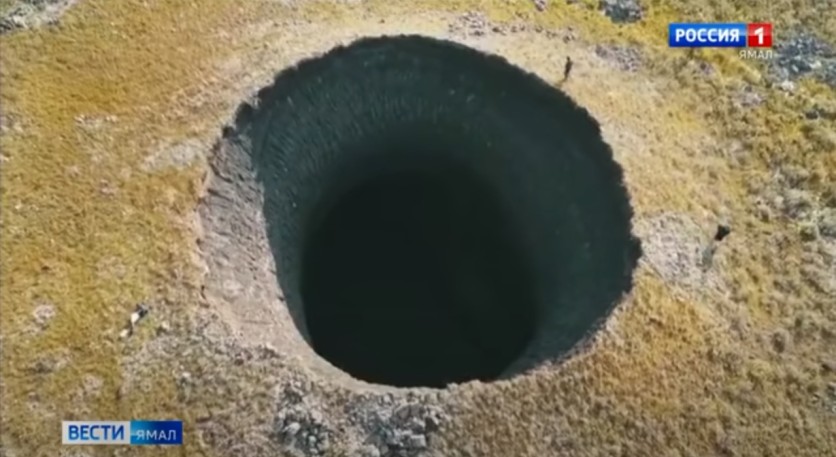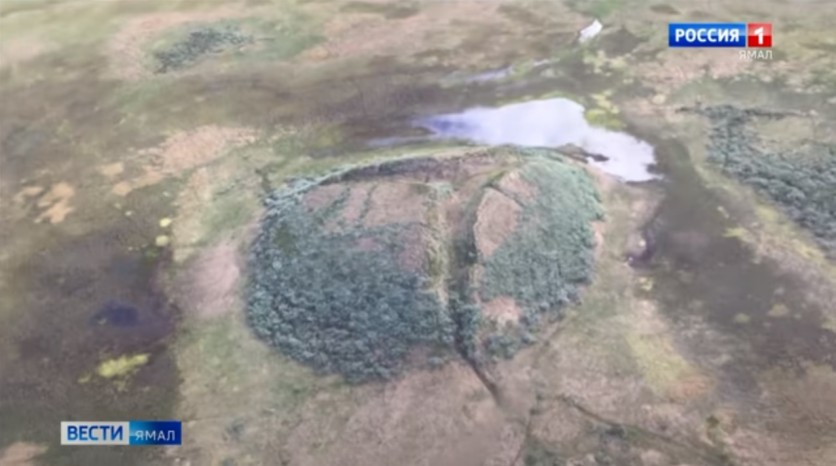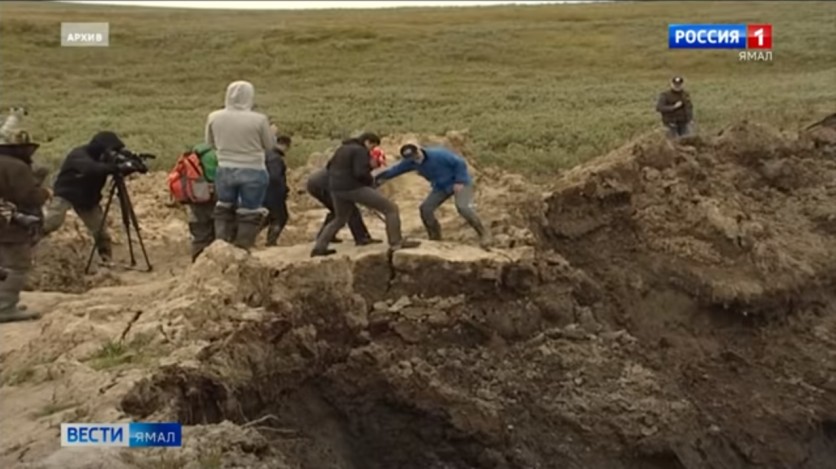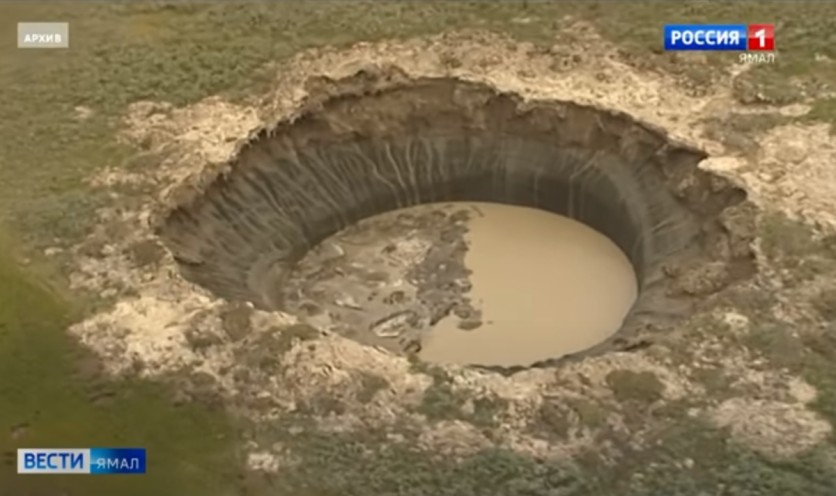Russian researchers have found up to 430 giant methane time bombs in the Arctic, which may leave huge craters and disrupt energy supplies to Europe. Local television channel Vesti Yamal reported that the site has been researched on by scientists since 2014.
The latest crater exploded in July and was found by a team of journalists this summer as they were flying over the area with helicopter, according to The Barents Observer. The hole's diameter appears to be about 20 meter, which looks like it was hit by a large meteor.

This is the 17th hole discovered across the Yamal Peninsula. In 2014, the first crater was discovered and since then, similar large ground holes have been found in the Yamal and Gydan peninsulas in Siberia. Satellite image analysis revealed about 7,185 mounds in the area.
Scientists said this phenomenon is due to vast methane eruptions after permafrost was thawed. Some experts said they are still investigating what triggered the explosions, although they are being linked to climate change. Initially, there were rumors that the 2014 crater were man-made pranks or caused by Kremlin missile tests or aliens.

Meanwhile, Moscow's Russian Oil and Gas Research Institute Professor Vasily Bogoyavlensky warned on Monday, September 7, that many of these time bombs are located near some key natural gas installations, which supply energy to Western Europe. A leading study led by Bogoyavlensky urged the military to spike 5% to 6% "really dangerous" mounds in the tundra which are suspected to explode in the future.
Read also: GREGOR Captures High-Rez Close-Up Photo of Solar Flare-It's Both Stunning and Terrifying
Dissecting the mounds to prevent exploding these "gas bombs"
Prof. Bogoyavlensky identified high risk sites near three gas fields on Yamal peninsula, including the South-Tambey, Western-Seyakha, and North-Tambey. Working on these high-risk mounds was a complex job for the military. The professor told The Siberian Times that they need to be "cut open with gas being pumped out."

Among the 17 known eruptions, only three had witnesses who said the mounds exploded with fire. A local woman was on site when a mould exploded in the Seyakha crater. The professor narrated that the lady was fascinated by the bulging mound, so and visited it daily.
Until one day, she felt some tremor, which she described as if "the earth was breathing." She left quickly just before the mound exploded in 2017. She could have been killed if she became more curious about it.

The professor also noted that the task must be done carefully. "It is sappers' work, as these phenomena can be called 'gas bombs'," Bogoyavlensky said adding that the ignition is believed to have been triggered by electrostatic discharges, which makes the mission more dangerous.
Meanwhile, Dr. Bogoyavlensky said the mounds were not identical to pingos, which are methane that formed from deeper layers through faults in thawed zones in the permafrost. These are commonly seen in the Arctic and subarctic.

Usually methane fills in cavities that are covered by seals of permafrost up to 30ft thick while it increases in size due to growing pressure from the gas. The mounds can grow up to almost 3 feet every year before exploding, throwing massive chunks of frozen rock and soil up to 2,950ft from the epicentre.
Meanwhile, the newest creater initially measured around 131 feet deep, but it is now shallower due to collapsing soil.

Read also: [New Discovery] NASA Finds Rust on the Moon: Rust Forming Without Oxygen or Liquid Water?
This is owned by Tech Times
Written by CJ Robles

![Apple Watch Series 10 [GPS 42mm]](https://d.techtimes.com/en/full/453899/apple-watch-series-10-gps-42mm.jpg?w=184&h=103&f=9fb3c2ea2db928c663d1d2eadbcb3e52)


